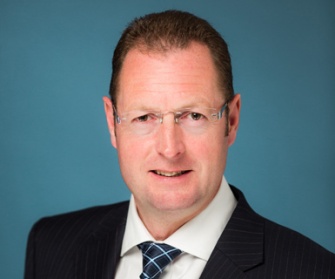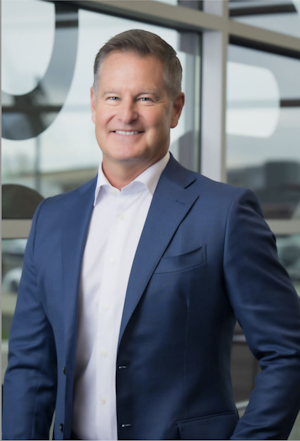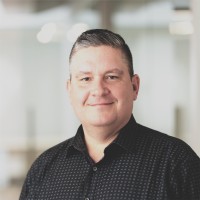 After a decade-long drought, the second of two transatlantic cables is nearing completion. AquaComms’ new AEConnect cable system will hook up Long Island with the northwest coast of Ireland, with its existing CeltixConnect cable providing an extension on to the UK and London. The cable is expected to be ready for service by the end of this year. I caught up with AquaComms CTO Tom McMahon earlier this month to find out how the project has been going so far.
After a decade-long drought, the second of two transatlantic cables is nearing completion. AquaComms’ new AEConnect cable system will hook up Long Island with the northwest coast of Ireland, with its existing CeltixConnect cable providing an extension on to the UK and London. The cable is expected to be ready for service by the end of this year. I caught up with AquaComms CTO Tom McMahon earlier this month to find out how the project has been going so far.
TR: What is the current status of the AEConnect cable system build? How far along are you, and what is left to do?
TM: We got the ships to sea 40 days ago, and so far so good. The cable ship Reliance was the first to start on the Irish side. The TE SubCom Cable Ship Reliance picked up the pre-laid shore end and headed toward the states across the Irish continental shelf, which stretches 170km off the coast. It is now continuing to surface-lay and will in a matter of days finish that, turn around, and do the post-lay inspection and burial on certain sections. Fortunately, we’ve managed to avoid the nasty weather. On the US side, the cable ship Decisive is currently surface-laying off the US coast. Unfortunately there we did run into Hurricane Joaquin so we made a decision to do an early cut on that cable, and run out further and surface lay, which proved to be a wise decision, and now Decisive has returned to the intersection to do the post-lay and inspection and burial and will move offshore to complete the small remaining section. In terms of avoiding the downtime, that was a good decision. The streamed end that the Decisive laid is ready for the third ship, Responder, which will pick up that end and close the gap in the middle. At this moment in time we are right on schedule to meet the final splice date at the end of this month.
TR: Have you encountered anything unexpected along the way?
TM: We have cameras on the plow so we can see what we come across at the bottom of the sea, and we see plenty of interesting things down there. We came across a bicycle 15km off the Irish coast that looked just pristine. None of us could figure out how it got there.
TR: This cable system took many years to make it off the drawing board, how did you get involved and what needed to be done to get the project rolling?
TM: My initial beginnings on this were with the CeltixConnect system, which is very small in comparison and stretches from Dublin to Holyhead. Concurrent with that, the AEC project was running, and the AEC group decided it would be wise to encapsulate the CeltixConnect cable into the overall system. The companies were amalgamated and I continued on as Project Manager for this system. Then there was simply a lot of different moving pieces to be brought to bear in quite a condensed timeframe: the backhaul in the US, the cable landing station in the US (which is now actually complete), the OSP from the cable landing station to the beach manhole, obviously the subsea pieces I mentioned, the 6.7km of OSP from the beach manhole to the cable landing station on the Irish side, diverse backhaul across Ireland to two Irish Sea cable crossings, and then diverse backhaul through the UK down to London.
TR: Why land the cable system in northwestern Ireland?
TM: AEC is quite a unique cable system. We take the view that the security of the cable system is of paramount importance. If you look at both sides of where the cable actually lands, it actually traverses the shortest possible distance of continental shelf. On the US side about 200km and on the Irish side less than 170km. The continental shelf is where you are most prone to damage from trawlers, anchors, etc. By choosing the right route through that part via surveys to get good burials, we’re looking at a cable system that is, I would say, the second-fastest but most certainly the most secure in the Atlantic.
TR: Does minimizing the distance on the continental shelf also save some money?
TM: Absolutely. The shelf is the part where you plow/bury, which is slow. You’re looking at 0.3 knots whereas when you are surface laying in deep water you can be laying at up to 6 knots. So you do save a lot of money by not being on the shelf. But that’s not the most important characteristic and it’s not why we’ve done it that way. It is the security it provides, the cost savings are relative. If we went into the UK like traditional cables going into the Channel, you lose that security going into shallow water where you have a history of cable cuts.
TR: When you are done, what will the key metrics of AEConnect look like?
TM: The cable is designed to be one of the most advanced systems in the Atlantic, 5500km in length with 67 repeaters at 89km spacing. At this time we have 3 fiber pairs remaining for commercial purposes and we should have a latency of about 55ms from cable landing station (Long Island) to cable landing station (Northwest Ireland). On day 1 we will have a capacity of 13Tbps per fibre pair, but expect to be over 20Tbps in the next two years.
TR: Are there additional branches for future expansion? What’s next?
TM: We did incorporate two branches into the system, one on the US side that could point toward Halifax, for example, and one on the Ireland side that could point toward Iceland and/or Scandinavia or south to Western Europe. There is always demand to get into London but also to avoid the UK on certain projects. At this time we are just focused on getting AEConnect up and running, but we are always looking at the options that would provide for us. We’re not done. It’s a hard to even think about it with all that’s going on at the moment, but we are certainly looking at other opportunities.
TR: After a decade of inactivity, suddenly we have two new transatlantic cable systems. What do you think changed to make that possible?
TM: I think there are many factors. There has been a huge growth in demand. I think people looked at the age profile of the systems currently in the Atlantic, some of those now 15, 16, 17 years old. I think the requirements of the Over-the-Top (OTT) players, such as Microsoft, are looking for long term 15-20 year leases and IRUs, which previous incarnations of cable systems could not provide. I think that all these factors put together made it feasible.
TR: Do you think those new players have to a degree replaced the traditional carriers which have seemed far less interested in undersea cable projects in recent years?
TM: Yes, to a degree. They are a big driver of these systems, and provide that early stage anchoring and security that enables you to get a cable system funded. There was obviously a bad taste left after some of the events of 2000-2001, so they are not easy to fund and are difficult to get across the line. The input of those parties definitely made it more feasible.
TR: Are we at the start of another boom in transatlantic cable builds?
TM: Even though growth is huge, so is the ability to meet it with electronics. So there is a balance and a tipping point. So we have two cables already, perhaps we will see one or two more as people look for different paths across the Atlantic and long term leases/IRUs come off the older systems. But I can’t see 5, 6, 7, 8 cables, I think that would not be correct. I would hope that people have learned a lesson from that time.
TR: You have been involved with many submarine cable projects over the years, what has changed since the dot-com era build-outs? What hasn’t?
TM: It hasn’t developed much in terms of the physical installation of the cable systems. Survey technology has come on, but nothing compares with the changes in the electronics, the optical technology. The capacities we can get now are just staggering. The permitting process has gotten even more difficult, which is probably not surprising. It has become a real task, and making that process coincide with the funding of systems can prove a real challenge. Usually one lags the other, though in this case the permitting was in front of the funding. But for all of these projects, the RFS date tends to stay the same and the start date gets missed, so everything becomes really condensed and the challenges are manifold to get things ready in a very short period of time.
TR: What has been the biggest challenge for you in getting AEConnect built?
TM: I think it has really been a mixture. Funding is always difficult, then aligning it with permitting, and then getting it in operation at possibly the worst time of the year. We always aim for these things to go in during April and May, and we always miss by exactly the wrong amount of time. But we made a brave decision to bring in 3 vessels to the project, and I think to date that has been a wise decision since we have managed to avoid an awful lot of the weather.
TR: Thank you for talking with Telecom Ramblings!
If you haven't already, please take our Reader Survey! Just 3 questions to help us better understand who is reading Telecom Ramblings so we can serve you better!
Categories: Industry Spotlight · Undersea cables






Discuss this Post